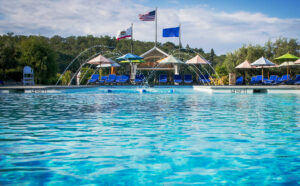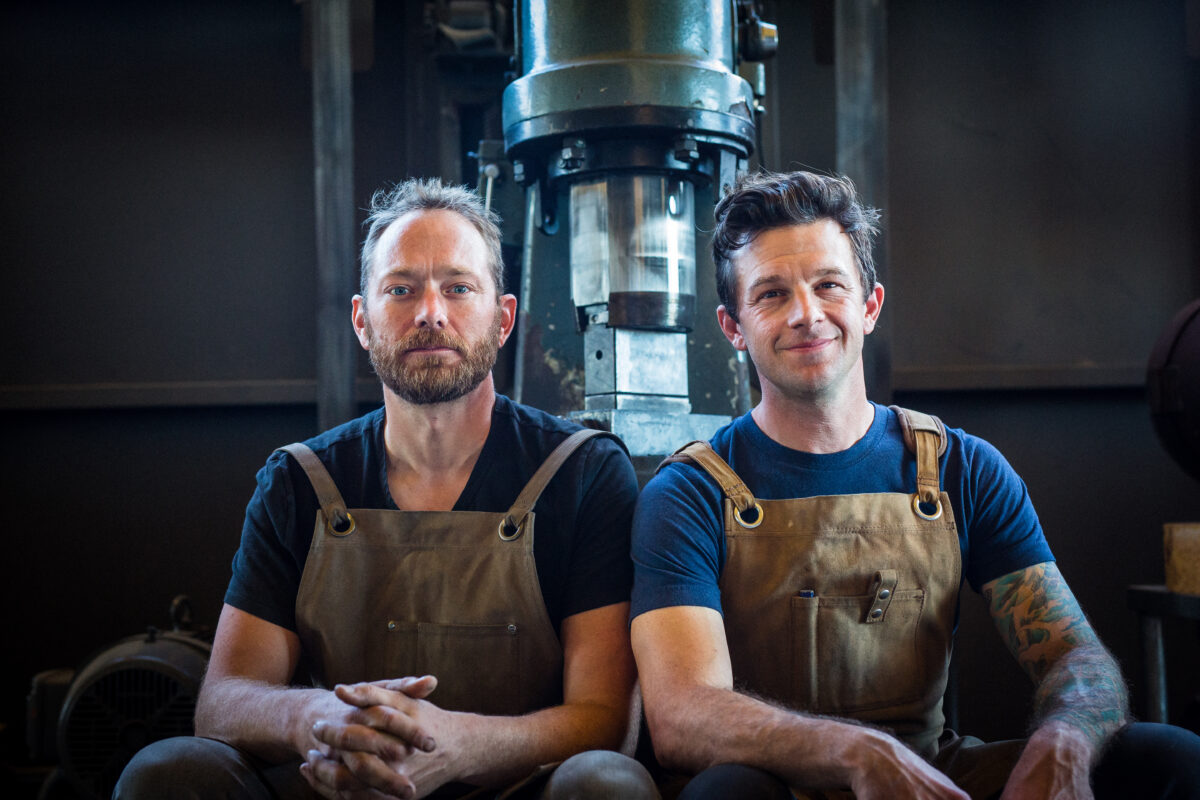Let’s get the cutlery puns out of the way early.
Mike Benz and Chris Fracaro are sharp, incisive guys who forged a friendship over one shared value in particular: “Chris and I both had this similar distaste for instant garbage,” says Benz, “all these things that end up in landfills, that aren’t meant to outlast us.”
In February 2021, the artisans formed Seral Wood & Steel. Using reclaimed steel and wood sourced from Sonoma County, they produce hand-forged chef’s knives and kitchen tools of remarkable beauty, implements that straddle the line between utility and art. Their knives are designed to be passed down — “maybe even fought over,” says Benz, with a smile — from one generation to the next.
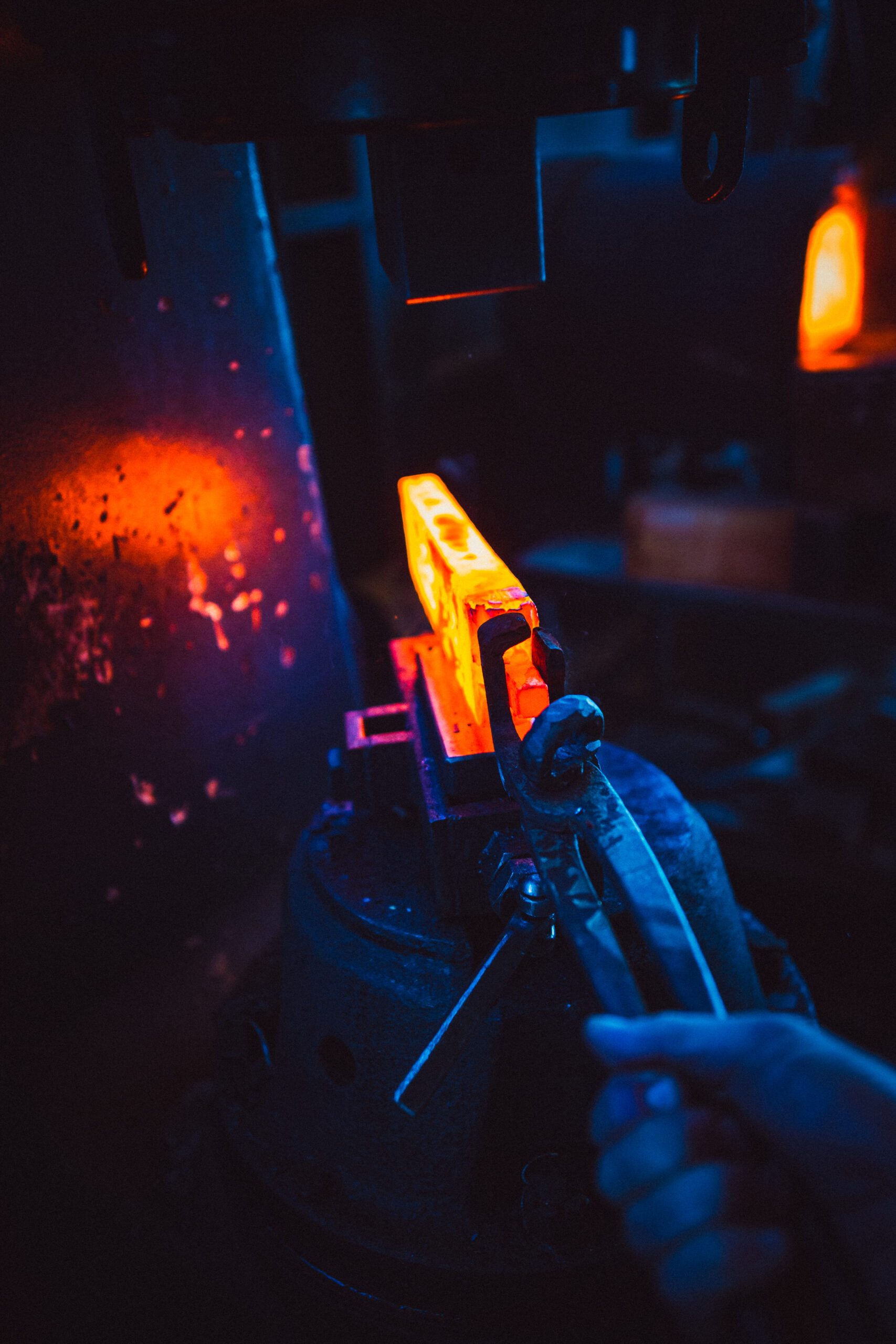
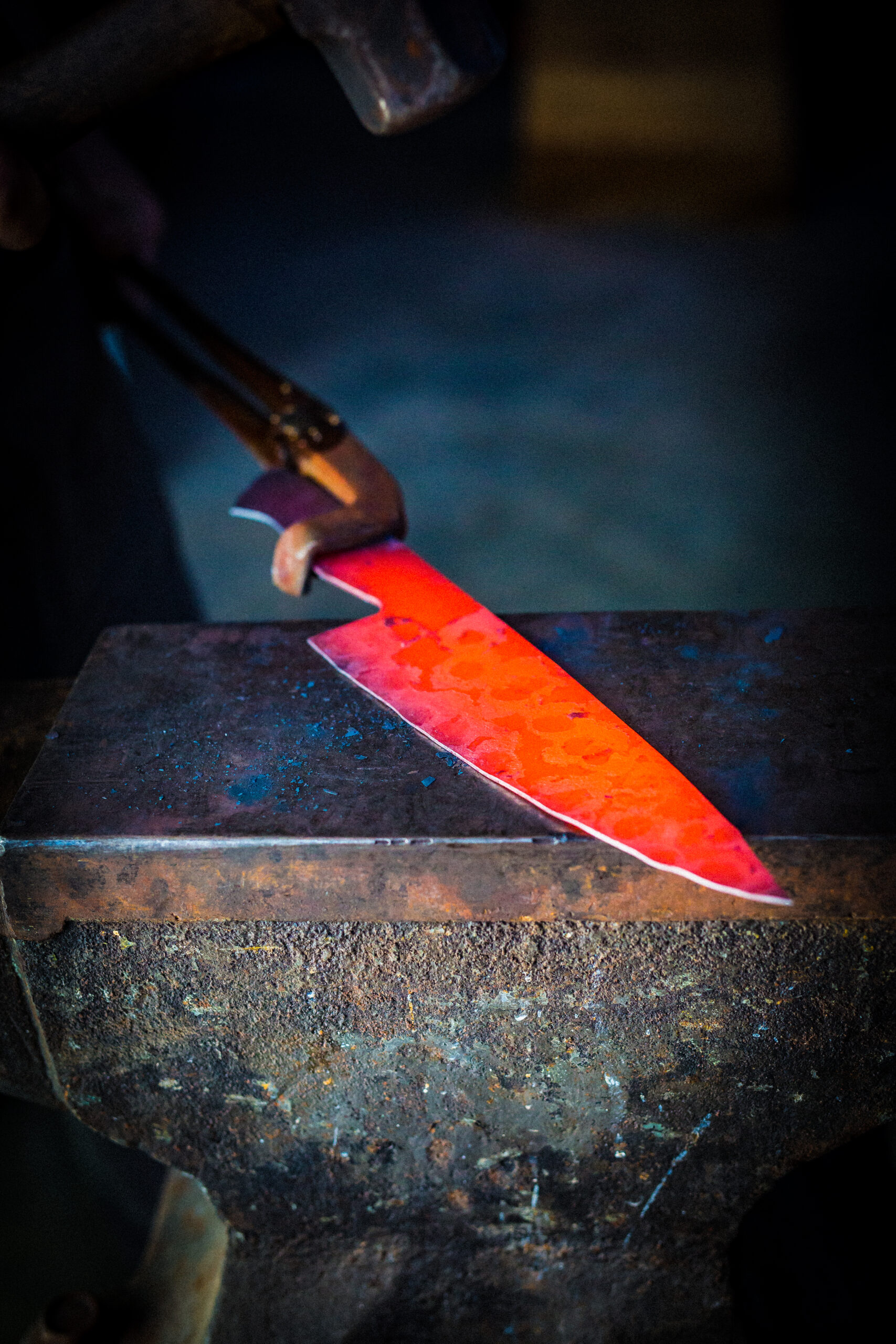
The two are intentional, deliberate, proudly old-school. The anvil in their Healdsburg shop dates back to 1860. The 7,000-pound power hammer has been around for a century. “Our table saw’s from 1969,” adds Fracaro.
“I absolutely love things that are built well, and built to last.”
Their process is the opposite of mass production. “We’ve mapped it out,” says Benz, “and any way you slice it” – that pun was unintended, he later confirmed – “with all the heating time and tempering and treating and gluing, we can’t make a knife any faster than about two weeks. But we can make a couple of knives during that time.”
Fracaro grew up with “crappy” stainless steel knives “that bent like a spring” – not a good thing in one’s cutlery, he explains. When someone gave him a high-end, Japanese knife, he noticed its rigidity, and how much better it performed. He started cooking more. His next thought: How do I make this?
The first car he owned was a 1970 Camaro. “I’ve always liked to take things apart and understand how they work,” says Fracaro, a graduate of Oregon’s South Albany High School, whose industrial arts program featured a strong metal shop class, where he first welded and worked in a foundry. “I started to grow a passion for metal then,” says Fracaro.
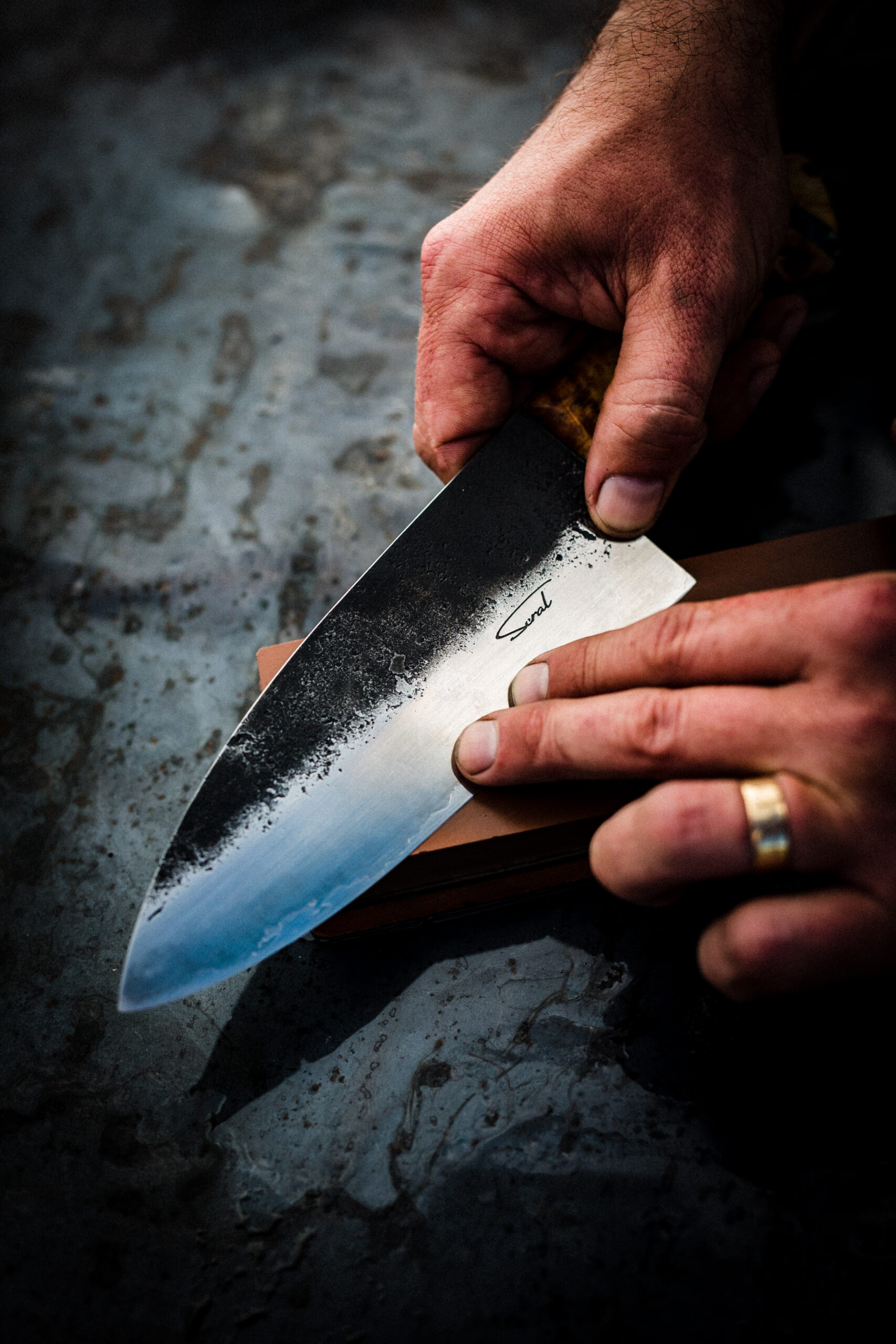
Benz is a native of Peekskill, New York, in the Hudson Valley. While working at a brewery in Ithaca, he met his future wife, Christine, then a student of viticulture at Cornell University. Their relationship blossomed. After she earned her masters degree, however, she informed Benz that she was moving to California.
Benz had a Sonoma County connection: He’d befriended Natalie and Vinnie Cilurzo, cofounders of Russian River Brewing Company, at a hop farm in upstate New York. “I basically just followed them west,” he recounts, “and they kept me, like a rescue animal.”
Benz joined the brewery, and swiftly rose to become director of distribution and sales. While learning to roast coffee, during what he refers to as his “hobby time,” he met Fracaro, whom he describes as “one of the first friends I made who I could hang out with and not talk about beer.”
Fracaro began teaching his friend about forging and knife-making. In December of 2019, Benz and his wife embarked on a “delayed honeymoon” to Japan, where they visited a family engaged “in the ancient art of knife-making,” Benz recalls.
Witnessing the care and attention that went into the craft, learning how hand-forging heightened the structural integrity of each blade, filled Benz with “a new level of energy for the project.”
A year later, Seral opened its doors for business – after they’d moved Fracaro’s shop up to Healdsburg from Petaluma.
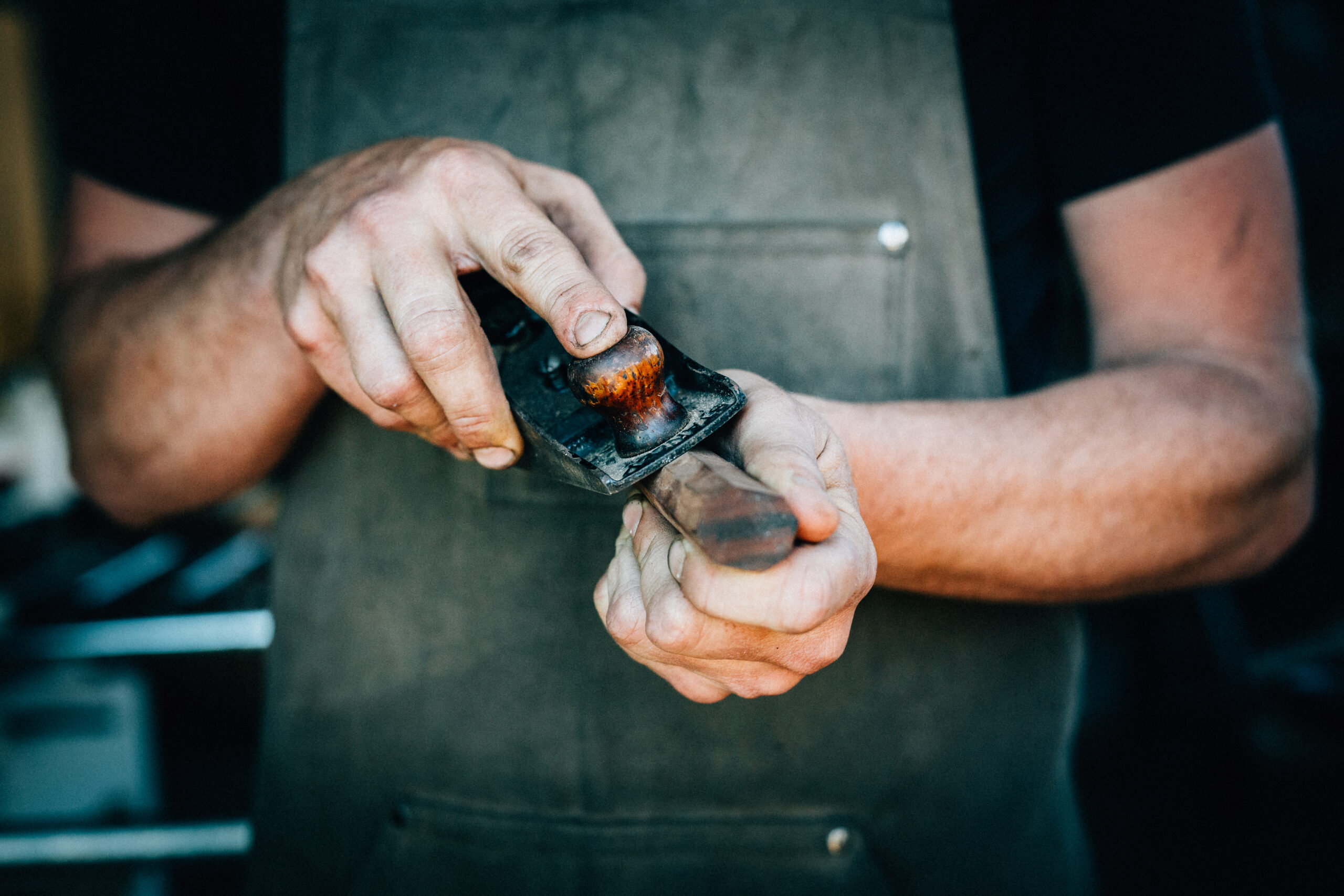
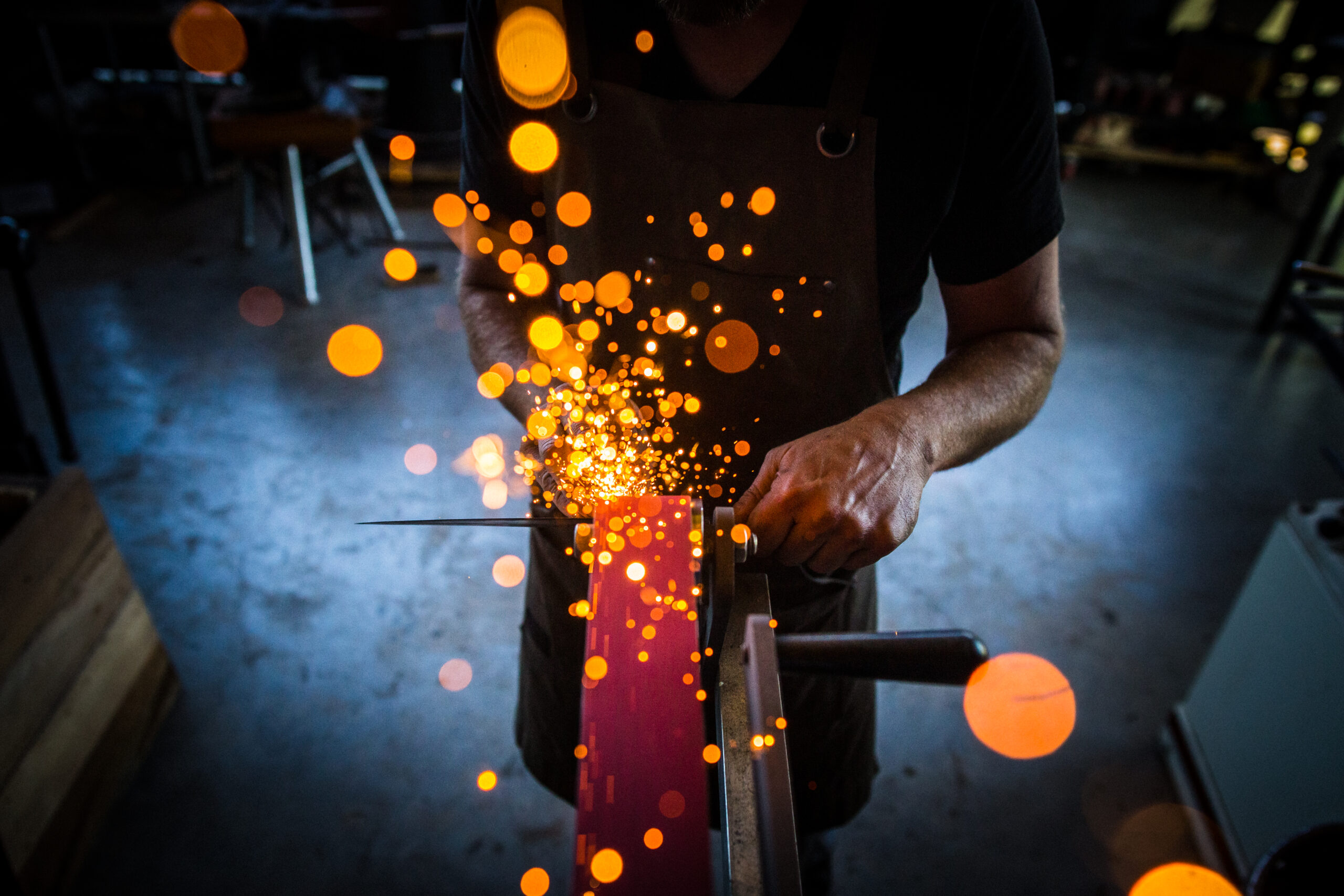
Two decades in the craft beer industry convinced Benz there was a growing population in Sonoma County of people who expected excellence, “but also wanted to know the story of the passion behind it,” he says. “So many people come here for beer, wine, food, and we have amazing versions of all those things. We wanted to create something made with materials from this area.”
Much of the stainless steel the pair uses was left over after construction projects at Russian River Brewing Company. Benz and Fracaro’s forging process uses two-thirds reclaimed stainless steel, which serves as the knife’s outer jacket. The final third is a high-carbon core in the middle, which allows the blade to take and hold a fine edge. Stainless steel is “tricky and finicky” and best forged in an oxygen-free environment, Fracaro explains. “If it oxidizes, we can’t stick the metals together.” So the metal is heated to 2,000 degrees, then pounded with a power hammer “that smashes it together at an atomic level. “
For blades featuring pattern-welded steel, they’ll repeat the process – cut, stack, and forge-weld each billet, a small, semi-finished rectangle of steel – until the desired pattern is achieved. It’s time-consuming, and results in 30% loss of material. But the results are stunning. The geometry of each knife the pair makes is specially tuned to its task.
Once the billet of steel is the correct size, they commence hammering out the knife shape by hand, on the anvil, forging the tip to a point. After forging the blade profile, they shape the handle. And after cooling, the steel is tempered to the desired hardness.
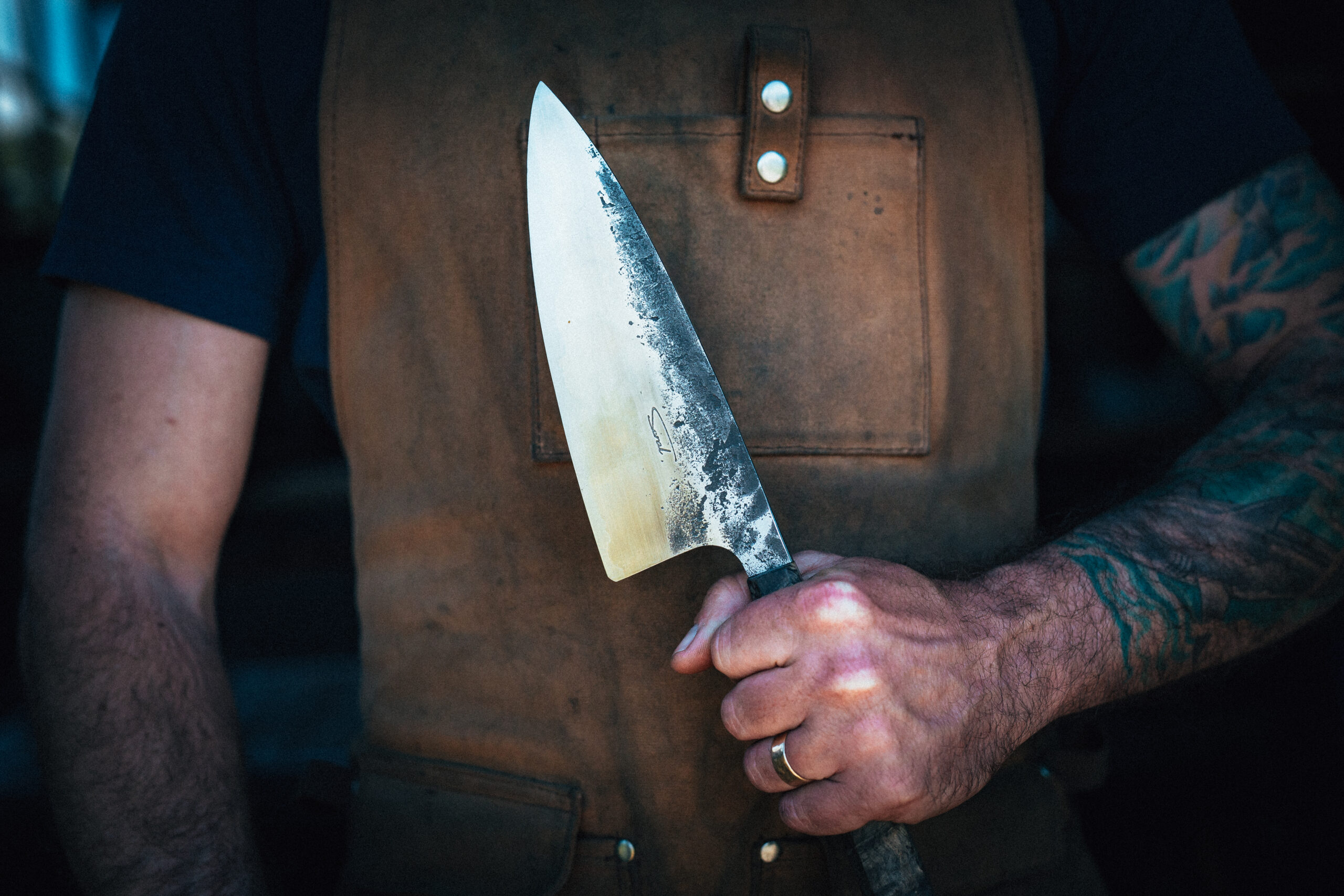
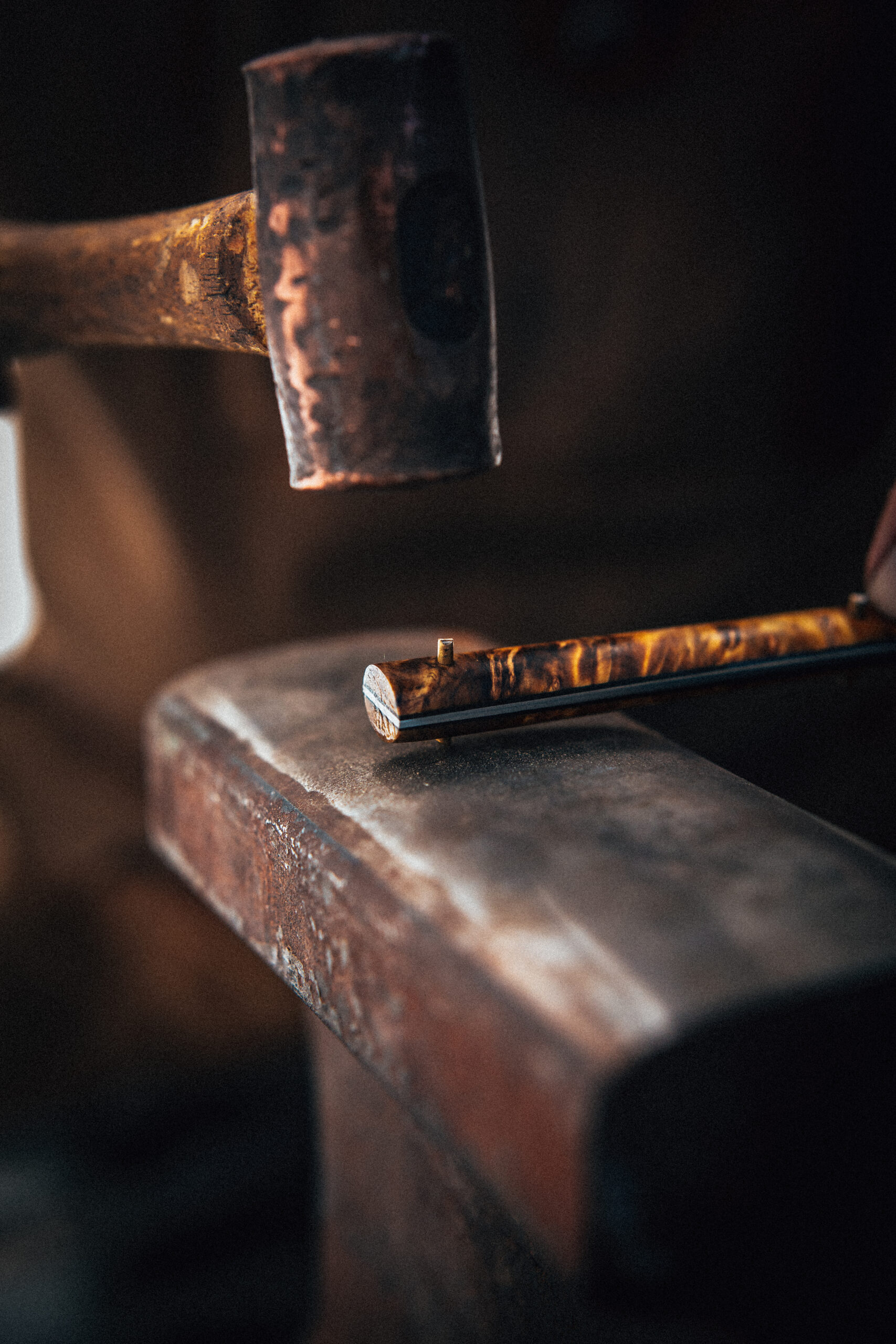
The handles of the knives come from oak, baywood, and laurel trees around the North Bay. Benz and Fracaro also use cast-off walnut from Cali’Co Hardwoods, a Santa Rosa company that makes gunstocks. The walnut Cali’Co can’t use goes into a pile called Fancy Rejects, “which is going to be the name of our band, once we get that started,” Benz deadpans.
The highest reward, the two say, is the nod of approval from an industry chef. “That’s when Chris and I high-five,” says Benz, “because we know we did it right.”
It’s also deeply fulfilling when they sell knives to home chefs, “and you meet them a year later, and their excitement for handmade culinary tools has skyrocketed. Because once you get one, you never go back. It’s like drinking craft beer. You don’t go back to Bud.”
Benz concludes with a riff on where they see themselves in several decades. They hope to be established figures, “the knife-makers in town.”
By then they might be “a little cranky,” he allows, slightly stooped “from all the handwork we’re doing. But we’re happy. We’re not trying to expand, to take over the world. We’re doing this thing that we care about. And we’re doing it consistently, and well.”
And with a bit of edge.




